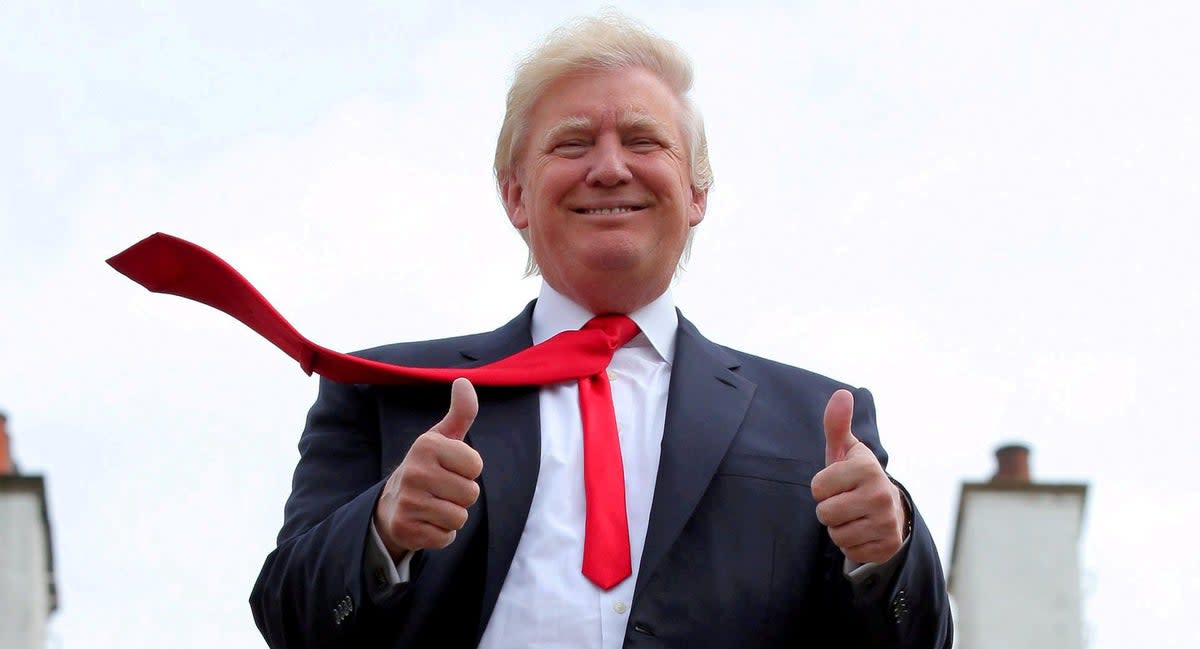Republican areas saw ‘baby boom’ after Donald Trump’s 2016 presidential win

- Oops!Something went wrong.Please try again later.
Republican-leaning areas of the United States saw a “sharp rise’ in births after Donald Trump’s presidential win in 2016, dubbed the “Trump baby bump”.
However, Democratic counties experienced a baby slump, a new study has revealed.
Researchers suggest Trump’s presidency increased Republicans’ economic optimism, motivating them to have more children.
The difference between Republican versus Democratic babies conceived in the first two years of Trump’s presidency amounts to between one and two per cent of the national birth rate.
Study co-author Professor Gordan Dahl, of the University of California, San Diego, said: “The size of the change is equivalent to changes in birth rates that occur after economic shocks or in response to policies designed to affect birth rates.
“For example, when unemployment drops by one per cent, it increases national fertility by one to two per cent, and when other countries provide a $1,000 subsidy to mothers for having a child, fertility rates rise by about two per cent.”
The 2016 scenario provided the perfect natural experiment due to the polarisation of the U.S and the surprise of the result.
Trump’s win in 2016 was unexpected by the majority of Americans.
The shock led to a sharp change in optimism among Democrats and Republicans, according to several different surveys.
The Civiqs survey showed that within four months of the election, Republican and Democratic outlooks on the economy had flipped.
A strong majority of Republican voters believed economic conditions were getting better, reversing their formerly pessimistic view.
However, the election had an opposite effect on Democrats. Most believed that the economy was getting worse.
The team also looked at the birth rates among Hispanic people and non-Hispanic people.
Prof Dahl said: “Hispanics were singled out by the Trump campaign and voted approximately two-to-one for Hillary Clinton in 2016.”
The research team found Hispanic mothers had fewer babies after the election.
A drop in birth rates among Hispanics relative to non-Hispanics was equivalent to 2.3 per cent of the national birth rate. This was even larger when compared to groups that heavily voted in favour of Trump and rural and evangelical white people.
Looking at previous elections the pattern seems to fit.
Barack Obama, who was long projected to win the presidency in both 2008 and 2012, had no effect on birth rates.
Yet, they found a similar effect to Trump in 2000 when George W. Bush was elected after Al Gore was favoured to win. But the change was much smaller compared to the Trump presidency.
Co-author Dr William Mullins, of the Rady School of Management at the University of California, San Diego, said: “Our research really illustrates how polarised the country has become over the last 20 years.
“Democrats and Republicans are deeply divided on their policy priorities and worries about the future, including on topics such as the environment, inequality, moral values and immigration.
“Polling data on voters’ satisfaction with ‘the way things are going in the U.S.’ reveals members of the two parties see the country through almost completely different lenses.”
To gather their information researchers used birth certificate data from the National Center for Health Statistics (NCHS).
They also compared this information to county-level Census Bureau data. This revealed the number of Democratic and Republican voters in the 2016 election.
To gauge the effects on Hispanic mothers they were able to use the ethnicity listed on birth certificates.
The study was published in the American Economic Review.

